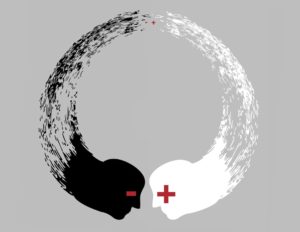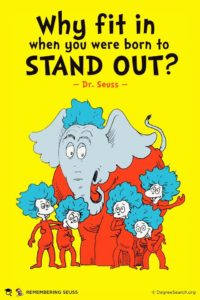De-stereotyping
 The process of polarisation can lead to one person seeing another as being without humanity and complexity, flattened into a two-dimensional caricature. One American organisation that has worked hard on ways to reverse this is Essential Partners, which has grown out of the Public Conversations Project. This in turn started when a group of family therapists decided to use the tools of their therapy to try to improve the public conversation. They encourage people to show themselves and see others as more complex than any single position they hold. We’ve seen already that this often involves the telling of personal stories. If I give you my view, you can usually find a way to contradict me. If I tell you my story, you are unlikely to be able to say, ‘that’s wrong’.
The process of polarisation can lead to one person seeing another as being without humanity and complexity, flattened into a two-dimensional caricature. One American organisation that has worked hard on ways to reverse this is Essential Partners, which has grown out of the Public Conversations Project. This in turn started when a group of family therapists decided to use the tools of their therapy to try to improve the public conversation. They encourage people to show themselves and see others as more complex than any single position they hold. We’ve seen already that this often involves the telling of personal stories. If I give you my view, you can usually find a way to contradict me. If I tell you my story, you are unlikely to be able to say, ‘that’s wrong’.
Here’s an example of how this can happen in a large public event. Future search conferences include a session called ‘prouds and sorries’. A Scottish conference in Forres, which focused on youth issues, had eight tables of stakeholders. ‘Sorries’ included ‘lack of communication’ (the youth group), ‘not listening enough’ (community organisations) and ‘although listening more, ignoring most of what is heard’ (the ‘authority’ group). And while the youth group diagnosed police as the main problem – police, they said, ‘abuse power towards the young and are prejudiced, e.g. young people are assumed to be drunk even if sober’ – they added: ‘There is stereotyping both ways – youth stereotype the police too’.” This recognition of the need for better communication and the regret for the stereotyping that was happening paved the way for a much more constructive relationship between stakeholders.
 Essential Partners use structured exercises to explore stereotypes. They ask members of each group to list the negative stereotypes they believe others hold about them. They then ask which stereotypes are most inaccurate, which inaccurate but understandable, and which most painful. When participants explain how stereotypes misconstrue them or pain them, others get to know them more fully and may be relieved to learn that their ‘adversaries’ are more multidimensional or well-intended than they had imagined. When speakers present stereotypes about themselves as understandable, listeners generally appreciate the owning up and feel less compelled to focus on flaws in the other.
Essential Partners use structured exercises to explore stereotypes. They ask members of each group to list the negative stereotypes they believe others hold about them. They then ask which stereotypes are most inaccurate, which inaccurate but understandable, and which most painful. When participants explain how stereotypes misconstrue them or pain them, others get to know them more fully and may be relieved to learn that their ‘adversaries’ are more multidimensional or well-intended than they had imagined. When speakers present stereotypes about themselves as understandable, listeners generally appreciate the owning up and feel less compelled to focus on flaws in the other.
In the Adirondacks, in the state of New York, some environmental activists said they felt profoundly misunderstood when seen as ‘anti-people’, just because they talk about the social community less often than the ecological community. A businessman listed as a stereotype that he is ‘only concerned about profit’. He felt misunderstood when his interest in profit was equated with greed.
In the dialogues on abortion, ‘pro-life’ women stated that they felt hurt when others assumed that they ignore the life of the child after birth; indeed, many were active in children’s welfare programs. Some who were active in Feminists for Life felt the same way when others presumed them to be antifeminist. Some ‘pro-choice’ women were distressed by implications that they were godless; many had active spiritual lives, and some were clergy.
I find these examples so reassuring. They remind that there is hope, that division and polarisation are not inevitable, that – to use the jargon – we have agency: we can act.

